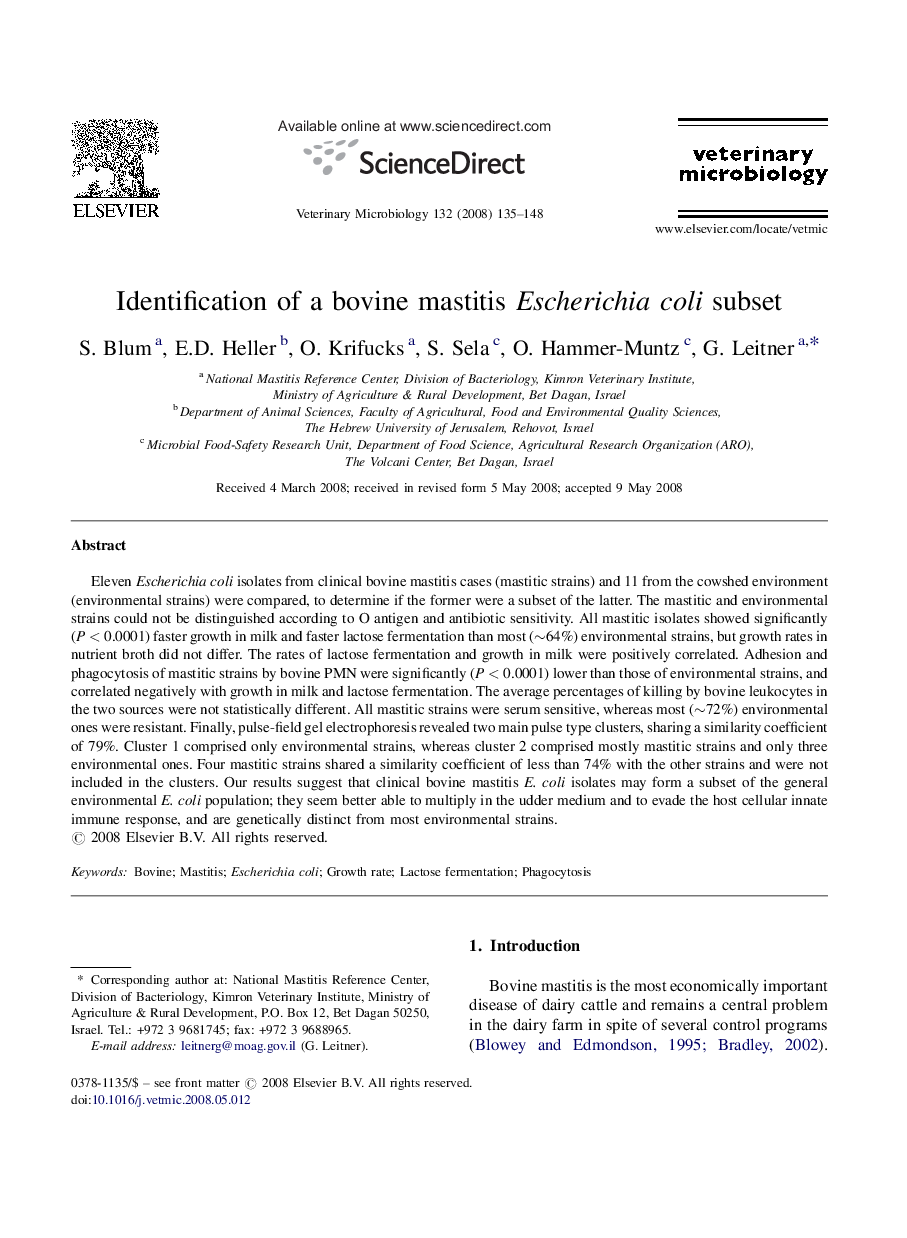| Article ID | Journal | Published Year | Pages | File Type |
|---|---|---|---|---|
| 2468729 | Veterinary Microbiology | 2008 | 14 Pages |
Eleven Escherichia coli isolates from clinical bovine mastitis cases (mastitic strains) and 11 from the cowshed environment (environmental strains) were compared, to determine if the former were a subset of the latter. The mastitic and environmental strains could not be distinguished according to O antigen and antibiotic sensitivity. All mastitic isolates showed significantly (P < 0.0001) faster growth in milk and faster lactose fermentation than most (∼64%) environmental strains, but growth rates in nutrient broth did not differ. The rates of lactose fermentation and growth in milk were positively correlated. Adhesion and phagocytosis of mastitic strains by bovine PMN were significantly (P < 0.0001) lower than those of environmental strains, and correlated negatively with growth in milk and lactose fermentation. The average percentages of killing by bovine leukocytes in the two sources were not statistically different. All mastitic strains were serum sensitive, whereas most (∼72%) environmental ones were resistant. Finally, pulse-field gel electrophoresis revealed two main pulse type clusters, sharing a similarity coefficient of 79%. Cluster 1 comprised only environmental strains, whereas cluster 2 comprised mostly mastitic strains and only three environmental ones. Four mastitic strains shared a similarity coefficient of less than 74% with the other strains and were not included in the clusters. Our results suggest that clinical bovine mastitis E. coli isolates may form a subset of the general environmental E. coli population; they seem better able to multiply in the udder medium and to evade the host cellular innate immune response, and are genetically distinct from most environmental strains.
